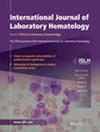High-Speed Centrifugation Fails to Mitigate Severe Lipemic Interference in D-dimer Measurement
Abstract
Objective
To evaluate the impact of varying lipid turbidity (LT) levels on D-dimer measurements after routine centrifugation (RC) and high-speed centrifugation (HC) in lipemic samples.
Methods
Lipemic samples (triglyceride > 1.7 mmol/L) were classified into four LT grades via HIL testing and visual inspection. Coagulation parameters (APTT, TT, FIB, PT-INR, and D-dimer) were compared between RC (2600 × g/10 min) and HC (10 000 × g/10 min) in 104 lipemic and 30 non-lipemic control samples.
Results
Significant differences (p < 0.05) were observed in all coagulation indices between RC and HC for lipemic samples. LT level was positively correlated with TG and total cholesterol (TC). Deviation rates for APTT, TT, FIB, and PT-INR were below 15%, while D-dimer deviation rates exceeded 50% in severe LT (grades 3–4). D-dimer levels in the lipid layer were significantly higher than those in the plasma layer (p < 0.05). HC failed to resolve interference in severely turbid samples, where D-dimer adhered to chylomicron-rich lipid fractions.
Conclusion
Contrary to CLSI recommendations, high-speed centrifugation (HC) significantly reduced D-dimer concentrations in the lower plasma layer of severely turbid specimens (e.g., type II hyperlipidemia), failing to mitigate turbidity interference. This discrepancy may lead to misdiagnosis of high-risk thrombotic conditions, such as pancreatitis. The upper lipid layer, predominantly composed of chylomicrons, exhibits a strong binding affinity with D-dimer, further complicating accurate measurement. Direct dilution, however, may resolve measurement failures in severe LT samples by maintaining analyte integrity while eliminating lipid interference.

 求助内容:
求助内容: 应助结果提醒方式:
应助结果提醒方式:


